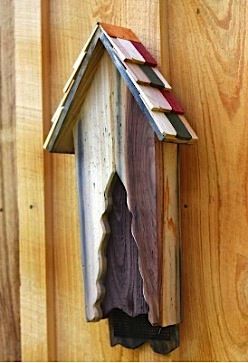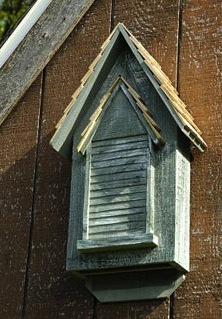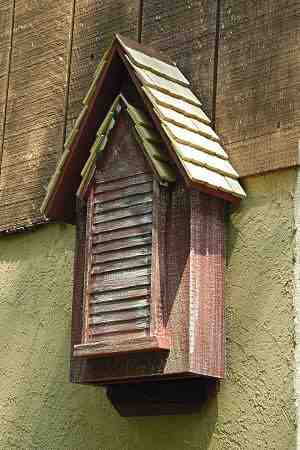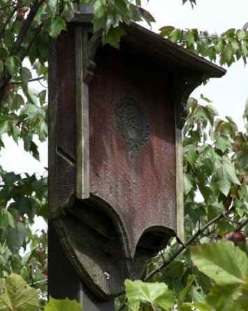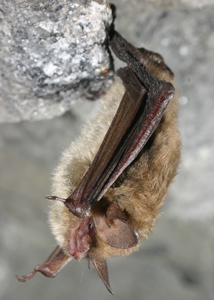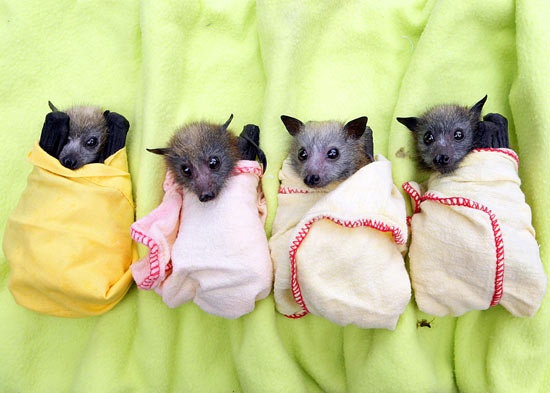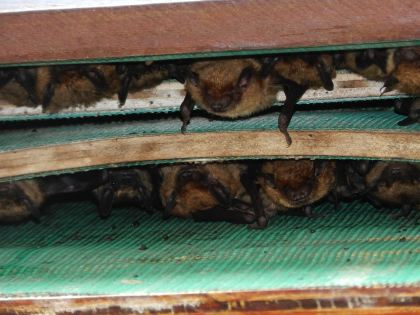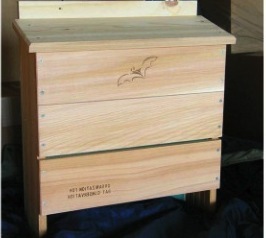-
Attract Them and Offer Roosts with Bat Houses
They make some cool shelters these days, from vintage to Victorian, recycled plastic, even kits to build your own bat houses. You can try your luck at attracting bats without a big investment. But why would anyone want to attract them? One word – beneficial would sum it up best!
Bats are major pollinators and seed spreaders. Natural insect control is another huge advantage to hosting these friendly mammals (yes, they’re mammals). Even small bat colonies will consume thousands of mosquitoes and other pests nightly.
Habitat plays a key role in attracting any friendly fliers to your place. This holds true for butterflies, hummingbirds and songbirds too. If pesticides are being used, stop! They’re harmful to the to the environment, wildlife and the ecosystem in general. Pristine, manicured lawns are becoming passe, more naturalized areas are in style. This doesn’t mean jungle… it involves use of native plants, naturalized beds, and varied habitat.
You can attract bats by offering places for them to roost (other than your attic vents). Bat houses needn’t be plain square boxes, but stylish shelters that complement the landscape. The two shown are handcrafted in the USA, and made from solid cypress.
If water exists on your property, there’s a strong likelihood bats will use your shelters. Being near a creek, stream, or pond is preferable. They require a stable environment, steady temperatures within their roosts. Facing the houses south will allow full sun exposure to warm the boxes. Two bat houses are even better, facing them in different directions and allowing for varying temperatures. Leaving an outside light on at night may also assist in bringing bats to your place. As bugs swarm the light, bats will follow if they’re currently near your property.
Height is important when installing the houses as well. Some say 10 feet is sufficient, others claim 15-20 feet from the ground is best. Mount directly on a tree, structure or pole.
You can learn more about housing specs and hosting bats from The Organization for Bat Conservation.
-
These Guys Use Bat Houses too – Please Advocate for Them
Almost eight years later and we’re still dealing with the mysterious fungus known as white nose syndrome which is critically affecting the bat population. Originating in the northeastern US, it’s continually spreading further west and south. Although it may seem trivial to some, the furry, winged mammals (yes they’re mammals) play a key role in the eco-system… especially to farmers and their crops.
A little cl
oser to home, as in our own backyards, bats help control insect populations with behavior that for the most part, goes unnoticed. They just happen to be some of our major pollinators too!
By offering shelter in the form of bat houses, you’ll encourage the critters to stick around. Several species are known to use the houses for roosting, and the shelters range in size from a single chamber to larger 5-chamber models. There’s even designer bat houses to enhance your landscape!
If you can spare 60 seconds, please see the quick note below from the Center for Biological Diversity, and take a stand for bats… thanks!
Since 2006 a deadly fungal disease called white-nose syndrome has killed nearly 7 million North American bats, pushing several species to the brink of extinction and creeping farther across the country every year.
But at least one of these species may get big help from the feds: The U.S. Fish and Wildlife Service has proposed to protect northern long-eared bats under the Endangered Species Act.
These bats have declined by 98 percent over a large portion of their range, and have been waiting a painfully long time for an emergency rescue. But — just as life-saving protections are in sight — the Service’s proposal to protect the creatures could be derailed by greedy energy companies, who are lining up to limit the bat’s protection.
Please take action now to tell the Fish and Wildlife Service to protect northern long-eared bats without delay. If we wait any longer, it may well be too late.
-
Beneficial Bat Houses
Bats could really use a new image!
Helping to demystify the furry creatures and their role in biodiversity would suit them and us well. This photo? Picked off Pinterest, but it sure is kind of cute! But do bats really roost in bat houses? You bet they do if habitat is suitable.
And just why would you want them around your property?
For insect control, bats can eat thousands of mosquitoes and flying pests each night. As a natural and effective method it’s brilliant. As pollina
tors, they spread and cross-pollinate both annuals and perennials in the garden. As an endangered species, yes! Brown bats are facing decimation due to a virus that still has scientists baffled. White Nose Syndrome is causing controversy with Fish and Wildlife Services – as far as revenue-generating options. Opening caves to the general public as tourist attractions seems to be an ill-thought idea in lieu of the disease and decrease in bat population numbers. Is it a concern? Just ask any farmer who’s had crops wiped out due to an over abundance of insects and pests 🙁
Hundreds of brown bats (or any large group) are referred to as colonies. Larger bat houses containing three or more chambers will host whole colonies. Houses or shelters do not require cleaning or nest removal like birdhouses, simply because they’re used for roosting only.
Suitable habitat consists of nearby woods or heavy brush, preferably with creeks, lakes, or streams in close proximity. Height is important, as bat houses should be placed at least 15-20 feet above ground. Erected on a pole, or the side of a structure is best. The range is broad on the size and type of shelters available. From
smaller kits and single-chamber houses for experimenting, to decorative and larger houses to host whole colonies, we’d say it’s definitely worth a try this season!

